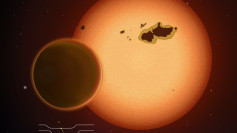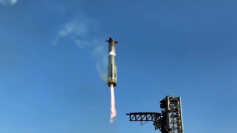A little dead star that dazzled us earlier this year is not over with its mischief.
Magnetar SGR 1935 + 2154, which released the first known rapid radio burst from within the Milky Way in April, flared up again, giving astronomers yet another opportunity to solve more than one great celestial mystery.
On Oct. 8, the partnership between CHIME and FRB observed SGR 1935 + 2154 emitting three milliseconds of radio bursts in three seconds. Following the observation of CHIME / FRB, the FAST radio telescope detected something else-a pulsed radio emission consistent with the magnetar's spin time.
"It's really exciting to see SGR 1935+2154 back again, and I'm optimistic that as we study these bursts more carefully, it will help us better understand the potential relationship between magnetars and fast radio bursts," astronomer Deborah Good of the University of British Columbia in Canada, and member of the CHIME/FRB, told ScienceAlert.
The detections are currently under review, published in The Astronomer's Telegram.
Fast radio bursts (FRBs) have only been observed until April of this year from outside the galaxy, typically from sources millions of light-years distant. The first one was discovered in 2007, and since then, astronomers have been trying to find out what causes it.
As the name suggests, the FRBs are bursts of incredibly strong radio waves observed in the atmosphere, some of which release more energy than hundreds of millions of suns and only last milliseconds.
Since most fast radio burst sources tend to flare up once and have not been observed repeat, they are highly volatile. In comparison, those we've observed usually come from so far out that our telescopes are unable to pick up individual stars. All of these features make it impossible for FRBs to track down either an exact source galaxy or a known cause.
SGR 1935 + 2154, however, is just about 30,000 light-years distant. It produced a powerful millisecond-duration burst on April 28, which has been called FRB 200428 in accordance with rapid radio burst naming conventions since then.
FRB 200428 was found to be not quite as strong as extragalactic rapid radio bursts until the signal strength was adjusted for distance, but everything else about it fits the description.
There's not anything we know yet about the three new blasts. It is possible any early findings are likely to change because scientists are still working on the results. Yet we can already conclude that FRB 200428 is both like and unlike them.





